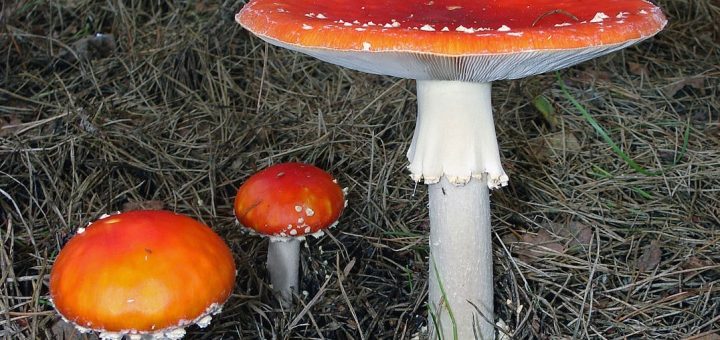#069: Amanita muscaria, Part 1: The Type Mushroom
You are undoubtedly familiar with this mushroom, even if you recognize neither its scientific name, Amanita muscaria, nor its common name, “The Fly Agaric.” If the word “mushroom” does not immediately bring this fungus to mind, then the word “toadstool” probably does. You have certainly encountered A. muscaria’s distinctive red cap with white spots in a variety of visual art forms. This toadstool frequently pops up in paintings, cartoons, video games, movies, and decorations. Essentially, A. muscaria is the default mushroom that people (in Western societies, anyway) think of when they hear the word “mushroom” – the type specimen for mushrooms, if you will. This is probably best illustrated by the Wikipedia page for “Mushroom,” which features a prominent picture of the photogenic Fly Agaric. Morphology Amanita muscaria produces large, umbrella-shaped agaric mushrooms with a circular, brightly colored pileus and a central, white stipe. The pileus ranges in size from...
















![#011: Characteristics of Kingdom Fungi [Archived]](https://www.fungusfactfriday.com/wp-content/themes/hueman/assets/front/img/thumb-small-empty.png)
